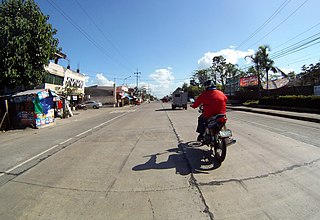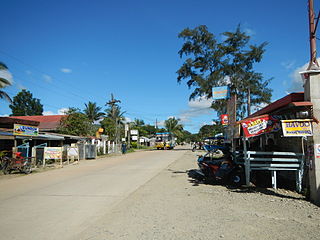
Sanchez Mira, officially the Municipality of Sanchez Mira, is a 3rd class municipality in the province of Cagayan, Philippines. According to the 2020 census, it has a population of 26,164 people.

Itbayat, officially the Municipality of Itbayat,, is a 5th class municipality in the province of Batanes, Philippines. In the 2020 census, it had a population of 3,128 people.

Ivana, officially the Municipality of Ivana, is a 6th class municipality in the province of Batanes, Philippines. According to the 2020 census, it has a population of 1,407 people, making it the third least populated town in the country.

Uyugan, officially the Municipality of Uyugan, is a 6th class municipality in the province of Batanes, Philippines. According to the 2020 census, it has a population of 1,380 people, making it the least populated town in the province and second least populated in the country, behind Kalayaan, Palawan.

Amulung, officially the Municipality of Amulung, is a 2nd class municipality in the province of Cagayan, Philippines. According to the 2020 census, it has a population of 50,336 people.

Baggao, officially the Municipality of Baggao, is a 1st class municipality in the province of Cagayan, Philippines. According to the 2020 census, it has a population of 87,753 people.

Enrile, officially the Municipality of Enrile, is a 3rd class municipality in the province of Cagayan, Philippines. According to the 2020 census, it has a population of 36,705 people.

Gonzaga, officially the Municipality of Gonzaga, is a 1st class municipality in the province of Cagayan, Philippines. According to the 2020 census, it had a population of 41,680.

Iguig, officially the Municipality of Iguig, is a 4th class municipality in the province of Cagayan, Philippines. According to the 2020 census, it has a population of 30,060 people.

Pamplona, officially the Municipality of Pamplona, is a 4th class municipality in the province of Cagayan, Philippines. According to the 2020 census, it has a population of 24,781 people.

Peñablanca, officially the Municipality of Peñablanca, is a 1st class municipality in the province of Cagayan, Philippines. According to the 2020 census, it has a population of 50,300 people.

Solana, officially the Municipality of Solana, is a 1st class municipality in the province of Cagayan, Philippines. According to the 2020 census, it has a population of 88,445 people.

Cabagan, officially the Municipality of Cabagan, is a 1st class municipality in the province of Isabela, Philippines. According to the 2020 census, it has a population of 53,897 people.

Divilacan, officially the Municipality of Divilacan, is a 2nd class municipality in the province of Isabela, Philippines. According to the 2020 census, it has a population of 5,827 people.

Maconacon, officially the Municipality of Maconacon, is a 3rd class municipality in the province of Isabela, Philippines. According to the 2020 census, it has a population of 3,977 people, making it the least populous municipality in the province.

Ramon, officially the Municipality of Ramon, is a 2nd class municipality in the province of Isabela, Philippines. According to the 2020 census, it has a population of 56,523 people.

Alfonso Castañeda, officially the Municipality of Alfonso Castañeda, is a 1st class municipality in the province of Nueva Vizcaya, Philippines. According to the 2020 census, it has a population of 8,539 people, making it the least populated municipality in the province.

Maddela, officially the Municipality of Maddela, is a 1st class municipality in the province of Quirino, Philippines. According to the 2020 census, it has a population of 40,943 people.

Santa Cruz, officially the Municipality of Santa Cruz, is a 1st class municipality in the province of Marinduque, Philippines. According to the 2020 census, it has a population of 54,692 people.

Pinukpuk, officially the Municipality of Pinukpuk is a 1st class municipality in the province of Kalinga, Philippines. According to the 2020 census, it has a population of 34,275 people.




























